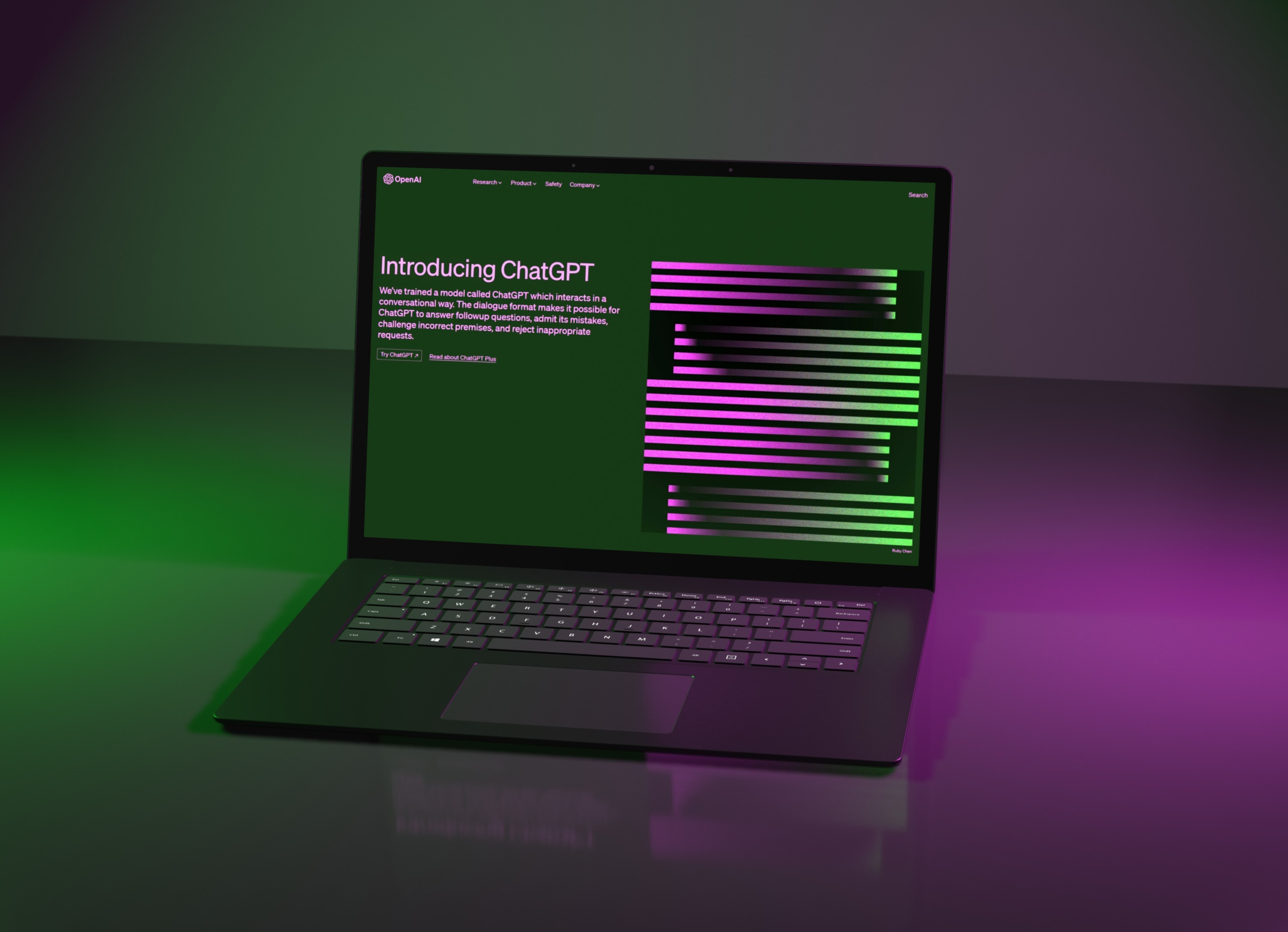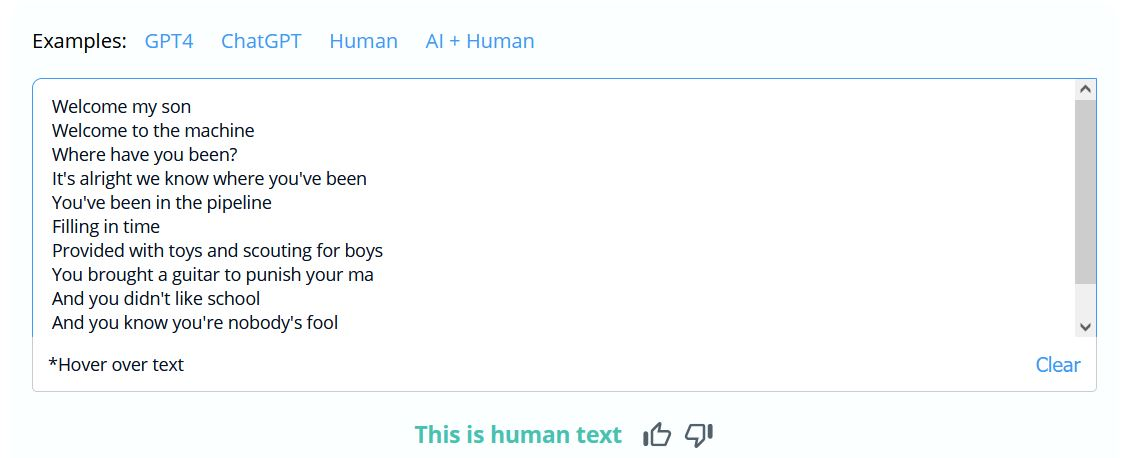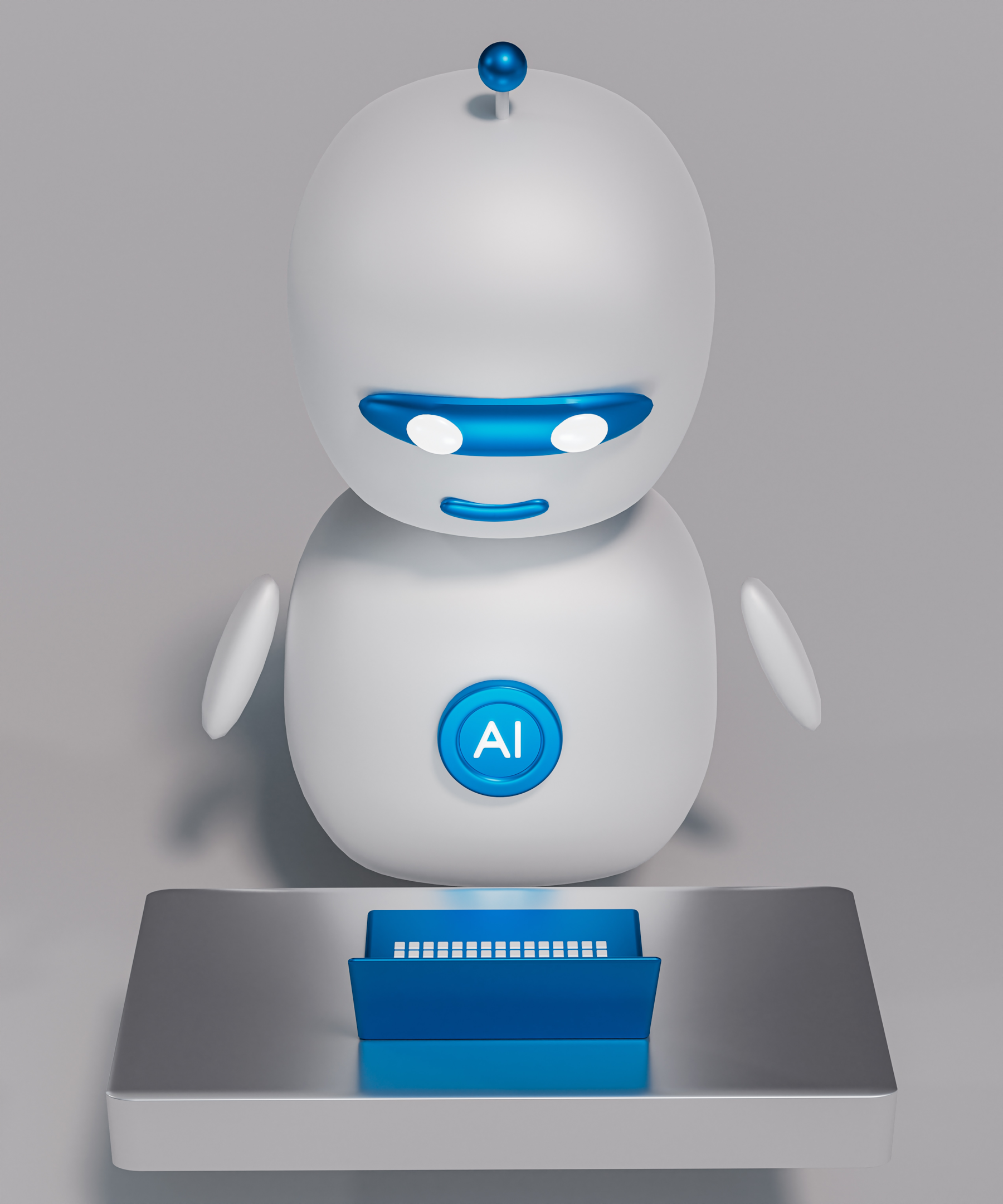
Your writers have one job – writing.
But are they even doing that? Or are you paying them to let AI do their job for them?
The associated costs could be much higher than you think.
Aside from the fact you’re being ripped off, the dangers of AI writing software include false information, latent racism, potential litigation, duplicate content penalties and related plagiarism and copyright issues.
So without proper editorial guidelines and procedures in place, having AI-generated content on your site can, at worst, damage your brand and alienate your customers, or at best, result in reams of flat and uninspired filler bogged down by lazy metaphors, overused phrases and jaded calls to action:
“Looking for <keyword 1>? You’ve come to the right place! We’re your one-stop-shop for <keyword2> and <keyword3> so why not contact us today?”
Bleck! 🤮
So in this article we’ll look at ways to detect AI generated text using both AI writing detection tools along with some tips which will help you determine whether or not the content you’re paying for was actually written by a human.
Want to know how detect AI writing? You’ve come to the right place!
The above headline is an example of my most hated copywriting cliche.
And nowadays I’m seeing it everywhere.
I first began to notice it in 2021, when it began appearing with unusual frequency in content provided by a marketing agency that shall remain unnamed.
Their content also exhibited an alarming lack of common sense, a tendency to go off on strange tangents, political bias (even though it wasn’t for a political website) and, on occasion, racial stereotypes.
The agency in question was reluctant to admit it, but, as I began experimenting with AI tools, I soon discovered what the issue was.
The agency was using AI to create their content without bothering to review it. And the company I was with at the time was paying ridiculous amounts of money for it.
Thus began my newfound career as an AI policeman.

Artificial Intelligence + Genuine Indifference
In the following two years, AI has gone mainstream and AI content software usage has become far more widespread.
It all started last summer with Dall E – AI’s Trojan horse. Suddenly the general public had become enthralled with AI.
Next came Chat GPT and, in its wake, another massive wave of hype. This new software, we were reliably told, could do absolutely anything!
As a result, AI-written text is now everywhere.
Teachers began complaining about the work submitted by their students who were using Chat GPT to write essays.
Meanwhile, I began this year screening hundreds of writer applicants, of which 90% were using Chat GPT or similar tools in the hope of earning money because a random blog post told them to.
It didn’t take long to detect some obvious patterns in the content allowing me to filter and reject them quickly. Usually, all it took was to skim a few paragraphs, though about 50% of the time, I could tell by reading the opening sentence.
When in doubt, I also had a growing list of free detection tools which I began to deploy to check whether the content I was looking at was AI content or human-written text.
I’d started out as an AI policeman, and by the end, I’d become the commissioner.
AI Writing Detection Tools
AI writing detectors are not perfect, but they are a useful way to screen would-be writers looking to pass off AI-generated content as their own in the hope they’ll get paid.
Sadly, this cheeky practice is more widespread than you might think, so having automatic tools to help detect AI-generated content can help you weed out time-wasters pretty quickly.
Free AI Content Detectors
If you need to check for AI content in a hurry for no cost, the list below is for you.
One advantage of using these content detection tools is that, even if you know the content is not written by AI, they’re still a useful way to make human text more varied and natural-sounding.
Content Scale AI Content Detector: https://contentatscale.ai/ai-content-detector/
This free tool is a powerful AI content checker capable of checking for different types of AI-generated content. Simply paste in your content and click the Check For AI Content button and it will analyze your content and highlight any AI text it detects. The results are based on how predictable (or overused) certain phrases or elements are.
It then gives the content an overall score based on how likely it is that your content has been created by a human or by AI. Of course, even if the content is 100% human-written text, you may find that it flags specific sentences. This means that the content in question is too predictable or “robotic” if you will, so it’s still a good idea to rewrite them to make sure they’re as fresh and original as possible.
In most cases, if you’re unsure about a piece of text, run it through this tool. You’ll get a fair overview as to whether or not a piece of content was created by a human. If you’re still not sure you can use some of the other free content detectors below.
Copyleaks AI Content Detector: https://copyleaks.com/ai-content-detector
Another simple and free AI content detector, once again just paste in your content, click the Check button and wait for the results.

AI Content Detector: https://ai-content-detector.online/
This is another handy free tool which also allows you to upload and analyze PDF files.
Zero GPT: https://www.zerogpt.com/
This free tool is a specialised ChatGPT content detector which allows you to either paste text or upload files and claims to have an accuracy rate of 98%.

GPTZero: https://gptzero.me/
Another free tool designed to detect ChatGPT text which allows you to either paste text directly or upload a file. GPTZero claims to be able to detect both GPT3 and GPT4 text as well as content created with Google Bard.
Content is assigned both a perplexity score, based on how predictable the text is, plus a burstiness score, which is a measure of how random the sentences are. Any GPTZero highlighted text should therefore be reviewed to ensure your content is fresh and original.
Writeful GPT Detector: https://x.writefull.com/gpt-detector
Writeful is a copyediting tool similar to Grammarly aimed at the academic market. Their free ChatGPT text detector tool also works on GPT3 and GPT4.
Writer.com AI Content Detector: https://writer.com/ai-content-detector/
Another free AI detector, you can check up to 1,500 words of text or analyse a URL, if you want to check more text you can opt for the premium option.

Best Premium AI Detector
Originality.AI Content Detector: https://originality.ai/
Given the dangers that AI-written content can present, opting for this premium option could prove to be a wise investment. It also has inbuilt plagiarism detection, making it worthwhile for marketers and agencies alike.
If AI content detection is a primary concern, rather than a secondary one, then Originality AI is your best option. Not only is it the most powerful and accurate, it can also detect multiple language models, including text generated by GPT4 and Google’s new Bard product.
By installing the Chrome extension, you can check content on the fly, which means it also works with Google Docs, WordPress, etc.
The downside is that, while there are plans to introduce multiple languages in the future, currently the product only works in English.
Can I Trust AI Detector Tools?
For the most part, yes.
But in a way that sort of defeats the purpose.
Using software to detect the use of other software doesn’t really help you much in the long run, because you become reliant on it.
Better to practice your discernment so you can become more skilled at differentiating AI text from human-written text. This way your own brain becomes the best AI detector of all.
After all, these AI algorithms use artificial neural networks based on our own brains. And if you think about how our minds work, by analyzing what we see and comparing them with past experiences, there’s really not much of a difference.
The major difference is that AI tends to run processes at far greater speeds than we can, but we have one significant advantage – instinct.
Remember the first time you saw a spam email or a phishing SMS? Sure AI software is better than ever at detecting these but every so often one still slips through the net. Luckily the general public is also better at spotting scams and spam messages because we’ve become more adapted to the digital world.
Spotting AI text works much the same way. After a while, you can become so adept at spotting AI text it becomes an automatic instinct just like how you can instantly spot a scam message or spam email.
Do AI Detectors Work?
Yes. AI detectors are generally quite reliable at detecting AI-generated text though even the best ones are correct 100% of the time.
Plus, it’s worth mentioning we’re in an AI arms race now, so keep in mind that the tool that works today might not work tomorrow.
This is why it’s always a good idea to manually review content and learn to use your own judgement when deciding whether or you are reading text written by AI or by a human.
On the other hand, it’s also possible, while using an AI detector tool, that you will encounter lots of false positives – human content that’s incorrectly flagged as AI text.
That’s because these detectors rely on their ability to gauge the originality of the text they’re analyzing to determine whether or not it’s human or not.
And any human writer whose content is so unoriginal and mechanical that they trigger an AI content detection tool to flag them as AI isn’t worth hiring anyway.

How does an AI content detector work?
AI content generators use different machine learning algorithms and language models.
A language model is the type of statistical word analysis that a particular AI system uses. For example, Open AI uses GPT4 while Google’s Bard product uses PaLM 2.
A good AI detector should be able to detect the specific patterns of different language models to help determine whether or not a piece of content has been generated by AI.
Regardless of the language model, all AI content generators use natural language processing techniques to mimic human speech.
To do so they’re fed with enormous amounts of training data, essentially feeding it large chunks of the whole internet, to help it understand the connections between different words.
AI content detectors also look at two other key factors known as Perplexity and Burstiness.
Perplexity & Bustiness
Perplexity is a measure of how predictable a piece of text is. The more predictable it is, the more likely it is to be written by AI.
On the other hand the more unpredictable the text, and the more potentially puzzling (perplexing) it is to the reader, the more likely it is to be human.
Why? Because as humans we tend to go off on tangents, both in our conversations and in our writing. While an AI text generator works pretty much the same way that text prediction on your phone works. Type a word, it will suggest another word, which will trigger another word, all based on a predictive algorithm.

A machine can try to emulate the style, but never capture the essence, especially since some of us are just that little bit harder to predict than others. And let’s hope that never changes.
Bustiness meanwhile is a measure of how random sentences are. Just as with human speech, the length of sentences in human writing can vary wildly. Some are long, others are short.
AI-generated content, on the other hand, tends to be far more rigid in terms of the length of sentences. It’s like comparing the steady bass thump of electronic music, with the more free-form rhythms of a live human drummer.
So in other words, detecting AI-generated text has a lot to do with analyzing how predictable and monotonous it is.
The Limitation AI Content Detection Tools
Using a content detector can be a quick way of checking whether or not a piece of content was created by a human or not.
One interesting side effect is that they can help highlight specific elements of human text that are overly predictable or phrases that are overused, making them handy to use during the copy-editing process.
They’re also useful in weeding out bad content, especially if you are trying to hire new writers and you’re being inundated with applications.
These tools aren’t 100% accurate all the time, however. Even the premium options (such as Originality AI which has the highest accuracy rate at the time of writing) still have a slight margin of error.
And, unlike Originality AI, the majority don’t also have inbuilt plagiarism detection.
Another one of the biggest drawbacks at present is that these AI content detection tools are all geared for English only and don’t necessarily work with other languages.
In time this will change and we’ll be able to check for AI content in more languages. But until then the systems will remain susceptible to blackhat “content laundering” techniques.
For example, one common technique is taking ChatGPT written text in one language and then running it through Google Translate to try and fool the detectors.
Another common one is to steal content wholesale from a website in one language, pasting that into Google Translate and then “spinning” the result via a paraphrasing tool like Quillbot.
Sneaky tricks like this can often fool the machines but all it takes is a cursory glance to realise there’s a problem. At best you’ll have content that feels quite odd but you just can’t put your finger on it, at worst the result will be pure gibberish.
That’s why you should look at these detection tools as a first defence and work on developing your own AI detection skills.
Having followed this technology ever more closely over the past few years I can intuitively sense whether something has been created by a machine or by a person.
In developing this “AI-radar” I’ve realised how important a life skill it is. One’s ability to tell the human from the artificial might well be one of the most important life skills to possess in the decades to come.
So to help you hone them, let’s look at the different ways you can detect AI-generated text.
The Secret To Detecting AI-Generated Text
Go with your gut.
AI detection tools can give you mixed signals and false positives, but once you developed your own AI detection instincts AI TEXT WILL STAND OUT LIKE A SCAM EMAIL FROM THE PRINCE OF NIGERIA.
Human written content has flaws and we often reuse the same words, phrases and idioms without realizing it, but again that’s part of what gives human writing its flavour. No flavour, no human writer.
Generally, with human-written text, if there are problems you can tell straight away.
With AI text something will seem off but you won’t necessarily know what it is. It’s nothing specific, but rather an overall sense as you read it that something’s not right.
So be mindful of first impressions as you start reading it. Does it feel natural?
Is it merely functional and generic, or does it have character? Can you get a sense of the writer’s unique personality?
Does it provoke any real emotional response? Or do feel like you’re going through the motions while reading it?
Do you feel like you’ve read it before? Does it feel original? How cliched is it? Does it rely heavily on lazy phrases and jaded stereotypes?
Is there variation in the length of sentences and paragraphs or does it feel like you’re reading a long blob of text that doesn’t transition naturally from one point to the next? Does it flow?
How logically structured is it? Does it go off on weird tangents or lack basic common sense?
Finally, and most important of all, is it credible? We all know by now that AI-written text tends to play fast and loose with the facts. If it seems artificial then it probably is.
If you don’t fully trust it, don’t trust it all. Because your customers won’t trust it either.
Because, at the end of the day, it doesn’t matter how smart the software is, there’s no algorithm for authenticity.

